|
play Firebirds | Firebirds-Berlin | Tongues of Fire alternate format- artist statement in .pdf Firebirds and Tongues of Fire are companion works that examine a power
For all its power and potential for terror, the course taken by the political leaders' voice is no less technological. In the end, it is only a wave in the air, a scratch in the groove. Sound with all its attendant artifacts of recording, transmission, reception, makes this evident. The voices of Firebirds are drawn from original speeches by Joseph Stalin, Benito Mussolini, Franklin Roosevelt, and Adolf Hitler, all from the years 1935-36. The source of the sound is actually a flame, modulated by high voltage audio fields. Each technology of speech transmission has its technical and social requirements for formation, but also its special conditions for reception. The telephone is realtime, bidirectional and intimate. Telephone conversation is an intimacy within the privacy of the domestic environment: we are still uncomfortable with speakerphones and conference calls. The phonograph allows its reception to be metered and deferred for collective reception in a domestic space. Radio, on the other hand, enforces realtime collective reception. There is no object of fixation other than the radiophonic voice itself, save perhaps a grandiose wooden console with silent glowing tubes and its smell of warm and primitive plastics. Prior to the radio the political speech had remained outside the home in the plazas and conference halls. When speech became sound, signal, wave, signal and sound again, our home life became politicized. The voice of the leader entered the private domain of the home and hearth. Imagine, for a moment, the trajectory of wireless, from its earliest glimmerings in the imaginations of physicists like Branly, Crookes and Lodge, all seriously involved with psychical and spirit communications; into the commercial exploits of Marconi; through the amateur-hacker era when every boy dreamed of a personal communication module that would let him talk with friends and imagined romantic interests across space and broadcast pranks (young boys tapping out false coordinates of the sinking Titanic); the military's monopoly during the first world war; the era of broadcast, the apex of radio in the 1930s when the voices of political leaders entered the communal domestic space of people around the world; the age of AM radio, rock and roll; and finally the wireless legacy we inherit in our mobile phones and Bluetooth peripherals. This vast nowhere all had to come from somewhere. Among the pioneers of radio, a lonely and lovesick young man, Lee De Forest, sat in his modest apartments in New Haven in 1904, searching for a breakthrough invention in radio to catapult him to fame and fortune. While tapping his Hertzian telegraph key he noticed that the flames of his gas chandeliers would jump and ebb with each transmitted dot and dash. Certain that he had discovered a revolutionary new and sensitive receiver for radio waves, he wrote up several patents for devices embodying his discovery. Long before the patents were duly issued, De Forest learned that the modulation of the flames was caused not by radio waves, but by the sound of the tapping of his key, thus replicating the discoveries in the 1850s by LeConte and Tyndall. Unperturbed, and possessed by the ideé fixe that the flame must be the sensitive receiver of Hertzian waves, he forged on. Piggybacking on work carried out recently by Ambrose Fleming in The flames of Firebirds are an examination of the collision of voice, meaning, material inscription, and collective space as it existed briefly in that historical moment. That sound can emerge directly from gaseous space, without a solid vibrating elements of the loudspeaker has been a phenomenon noted since the earliest days of electronic technology. A number of attempts to introduce this phenomenon into general usage ensued. All failed. In 1924 Lorenz AG of Berlin marketed a Kathodophone, an early form of plasma tweeter. This was basically a triode opened to the air The traces of voice presented in Tongues of Fire hark back to a much earlier era, when the manometric flame of Koenig served as a significant advance in phonological studies in the mid- to late-19th century. These traces are made by vibrating a flame by placing a speaking tube in proximity to the gas supply. I followed the descriptions from John Tyndall's Sound in constructing the manometric capsule and, following the example of Dayton Clarence Miller later in the 19th century, adapted an old bellows-camera into a slit scan recording device to inscribe the flame variations on 120 roll Ektachrome film in realtime. These images are the precursors of the oscilloscope traces that followed, and of the graphical displays now seen in our audio editing software. Each 31 inch film represents about 15 secon play Firebirds | Firebirds-Berlin | Tongues of Fire
|
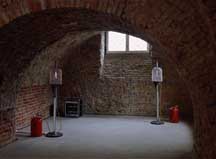 complex of inter-relationships between fire and language from a diverse variety of technical, historical, and metaphorical viewpoints. The fact that speech is made of sound is not always apparent as we speak, listen, read, and are transported to the inner recesses of conversation. But electronic media, the radio in particular, reconfigured our culture's perception of the relationship between speech and sound for most of the twentieth century. Surely the transformation of speech into signal, signal into wave, to recording and playback make apparent that meaning is forever cast as sound, sound as signal, signal as noise and onward.
complex of inter-relationships between fire and language from a diverse variety of technical, historical, and metaphorical viewpoints. The fact that speech is made of sound is not always apparent as we speak, listen, read, and are transported to the inner recesses of conversation. But electronic media, the radio in particular, reconfigured our culture's perception of the relationship between speech and sound for most of the twentieth century. Surely the transformation of speech into signal, signal into wave, to recording and playback make apparent that meaning is forever cast as sound, sound as signal, signal as noise and onward. 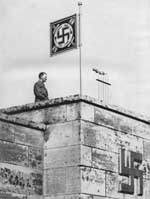
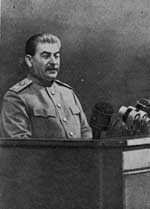
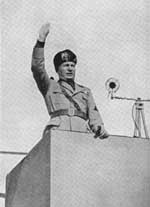
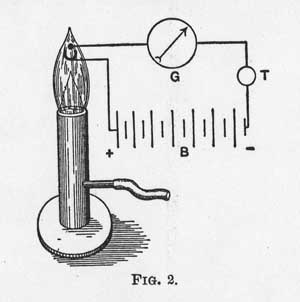 England, and earlier by Elster and Geitel in Berlin, De Forest began encapsulating his experiments inside light bulbs, replacing the dancing flame with the glowing filament. By insight or perseverance or just blind luck, De Forest succeeded in producing, in 1906, the Audion, or vacuum tube, an efficient amplifier that was to make radio the vast medium it later became and usher in the electronic era: television, radar, computers that dominated most of the twentieth century. De Forest's invention presents us with an intersection in a moment in time, 1906, the age of electric lighting, when the flames of candles and gas jets were everywhere being locked up in glass bottles, and at the same time all the words and messages running through wires were leaking out into Maxwellian space as communication became radiant.
England, and earlier by Elster and Geitel in Berlin, De Forest began encapsulating his experiments inside light bulbs, replacing the dancing flame with the glowing filament. By insight or perseverance or just blind luck, De Forest succeeded in producing, in 1906, the Audion, or vacuum tube, an efficient amplifier that was to make radio the vast medium it later became and usher in the electronic era: television, radar, computers that dominated most of the twentieth century. De Forest's invention presents us with an intersection in a moment in time, 1906, the age of electric lighting, when the flames of candles and gas jets were everywhere being locked up in glass bottles, and at the same time all the words and messages running through wires were leaking out into Maxwellian space as communication became radiant. 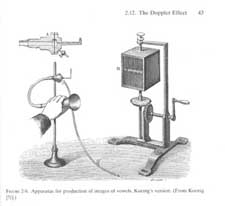 coupled to a small horn. In the early 1950s, S. Klein elaborated on this principle and described an electrothermal horn loudspeaker using a rich mixture of platinum and iridium to project ultrasonic waves. In 1967 military researchers at United Technologies Corporation in Sunnyvale published a paper in Nature describing the form of electrothermal transducer used in
coupled to a small horn. In the early 1950s, S. Klein elaborated on this principle and described an electrothermal horn loudspeaker using a rich mixture of platinum and iridium to project ultrasonic waves. In 1967 military researchers at United Technologies Corporation in Sunnyvale published a paper in Nature describing the form of electrothermal transducer used in  ds of audio waveform. Again I chose political speech, in this case the war whoops of George W. Bush on the eve of his invasion of Iraq, as much for the familiarity of its cadence as for the reminder it provides of the dangers of fire, friendly or otherwise.
ds of audio waveform. Again I chose political speech, in this case the war whoops of George W. Bush on the eve of his invasion of Iraq, as much for the familiarity of its cadence as for the reminder it provides of the dangers of fire, friendly or otherwise.